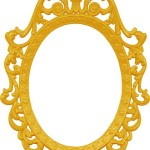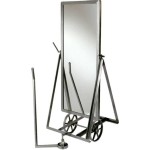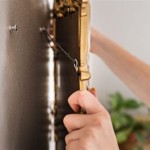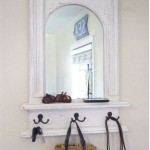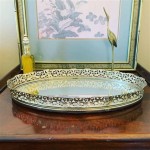How To Remove Adhesive From Wall Mirrors
Removing adhesive from a wall mirror can be a delicate process, requiring patience and the right approach to avoid damaging the wall or the mirror itself. Different adhesives require different removal methods, so proper identification of the adhesive type is crucial for effective removal.
Identifying the Adhesive
Before attempting removal, it is essential to determine the type of adhesive used. Common adhesives for wall mirrors include:
* Double-sided tape * Construction adhesive * Mounting tape * Liquid nails * Silicone sealantIdentifying the adhesive will inform the most effective removal strategy and minimize the risk of damage.
Tools and Materials for Adhesive Removal
Gathering the necessary tools and materials beforehand streamlines the removal process. Common tools and materials include:
* Gloves * Safety glasses * Putty knife or scraper * Razor blade scraper (for stubborn residue) * Hairdryer or heat gun * Adhesive remover (commercial or homemade) * Soft cloths or sponges * Warm soapy waterHaving these items readily available ensures a smooth and efficient removal process.
Removing Adhesive Residue From the Wall
Once the mirror is removed, the remaining adhesive residue can be tackled using several methods depending on the adhesive type and the wall's surface. The following steps outline effective removal techniques:
*Heat Application:
A hairdryer or heat gun can soften most adhesives, making them easier to scrape off. Apply heat to the adhesive residue for a short period, testing the adhesive's pliability regularly. *Scraping:
Once softened, carefully use a putty knife or razor blade scraper to lift the adhesive from the wall. Maintain a shallow angle to prevent gouging the wall surface. *Adhesive Remover:
Commercial adhesive removers can be effective for dissolving stubborn residue. Follow the manufacturer's instructions carefully and test the remover in an inconspicuous area before widespread application. *Homemade Solutions:
A mixture of warm soapy water and vinegar can sometimes be effective for removing milder adhesives. Apply the solution to the residue, let it sit for a few minutes, and then attempt to scrape or wipe it away.Removing Double-Sided Tape
Double-sided tape can be particularly stubborn. These specific methods are often effective:
*Fishing Line or Dental Floss:
Slide fishing line or dental floss behind the tape and use a sawing motion to cut through the adhesive. *Goo Gone or WD-40:
Apply a small amount of Goo Gone or WD-40 to the tape residue, allowing it to penetrate for several minutes before attempting removal with a scraper.Removing Mounting Tape
Mounting tape, similar to double-sided tape, can be removed using these targeted techniques:
*Heat Application:
A hairdryer can soften the adhesive, allowing for easier removal with a scraper. *Adhesive Remover:
Commercial adhesive removers specifically designed for mounting tape can be highly effective.Removing Construction Adhesive or Liquid Nails
Heavier-duty adhesives like construction adhesive or liquid nails require more robust methods:
*Mechanical Removal:
A chisel or heavy-duty scraper may be necessary for removing thicker layers of adhesive. Exercise extreme caution to avoid damaging the wall. *Solvent-Based Adhesive Remover:
For particularly stubborn residue, a solvent-based adhesive remover may be necessary. Always ensure adequate ventilation when using these products.Dealing with Different Wall Surfaces
The wall's surface material will also influence the appropriate removal method. Consider these points when selecting a technique:
*Painted Walls:
Exercise caution when using scrapers or harsh chemicals, as these can damage the paint. Test any method in an inconspicuous area first. *Wallpaper:
Avoid using excessive moisture or harsh chemicals, which can damage or discolor the wallpaper. *Tile:
Tile is generally more resistant to damage, allowing for more aggressive removal methods if necessary.Cleaning the Area after Adhesive Removal
After the adhesive is removed, cleaning the area is essential for restoring the wall's appearance. Follow these steps for effective cleaning:
*Wash the Area:
Use warm soapy water to remove any remaining residue or cleaning solutions. *Rinse Thoroughly:
Rinse the area with clean water to remove any soap residue. *Dry the Area:
Dry the wall thoroughly to prevent water damage or staining.By carefully identifying the adhesive type and employing the appropriate removal method, one can effectively remove adhesive from a wall mirror without causing damage to the wall or the surrounding area. Always prioritize safety and test methods in an inconspicuous area before widespread application.

How To Remove A Mirror Glued The Wall Forbes Home

How To Safely And Easily Remove A Large Bathroom Builder Mirror From The Wall Site Title
How To Remove Tar Like Adhesive On Drywall After Removing Mirror Diy Home Improvement Forum

How To Remove A Glued Bathroom Mirror From The Wall

How To Remove A Large Mirror That S Glued The Wall Emerging Home
How To Remove Tar Like Adhesive On Drywall After Removing Mirror Diy Home Improvement Forum

How To Remove Super Glue From A Mirror For Better Reflection

How To Remove A Bathroom Mirror Lowe S

How To Safely And Easily Remove A Large Bathroom Builder Mirror From The Wall Site Title

How To Remove A Mirror Glued The Wall With Mastic

